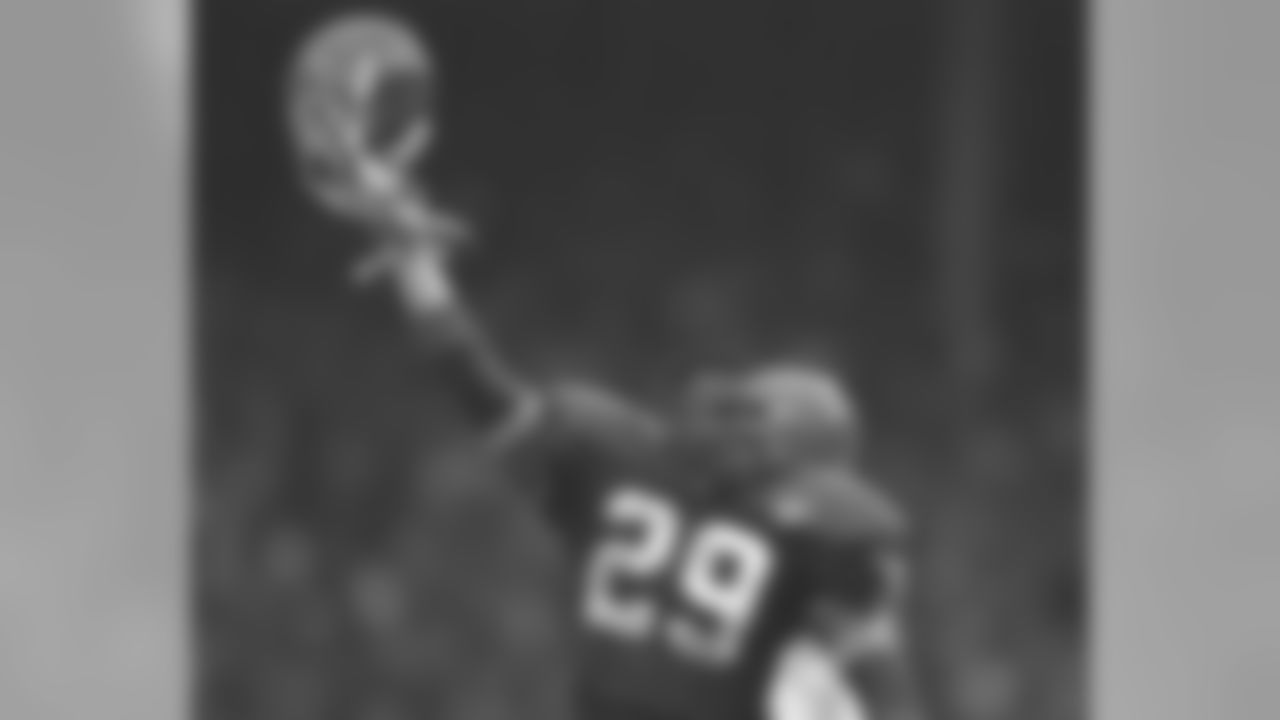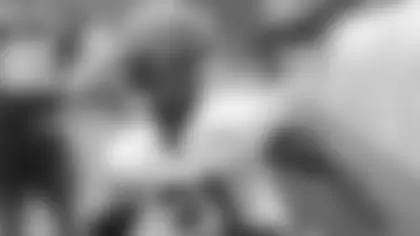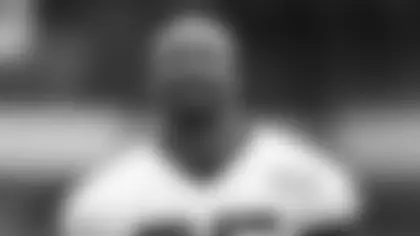
1969 – To honor the NFL's 50th season, a special anniversary logo was designed and each player wore a patch on the left shoulder of their jerseys throughout the season.

1994 – To honor the NFL's 75th season, a special anniversary logo was designed and each player wore a patch on the left breast of their jerseys throughout the season.

1999 – To honor their return to the NFL, a special "1999" logo was designed and each player wore a patch on the left breast of their jerseys throughout the season.

2002- Al Learner

2006 – To honor the 60th Anniversary of the Browns, two special anniversary logos were designed and each player wore a patch on the left breast of their jerseys throughout the season. The brown logo was worn on the brown jerseys and the white logo was worn on the white jerseys.

2006 – To honor the 60th Anniversary of the Browns, two special anniversary logos were designed and each player wore a patch on the left breast of their jerseys throughout the season. The brown logo was worn on the brown jerseys and the white logo was worn on the white jerseys.

2008 – After the sudden death of Gene Upshaw, the NFL announced that for the opening weekend of the 2008 season, all 32 teams would wear a patch on the left chest of the jerseys with the initials "GU" and the number 63, Upshaw's jersey number with the Oakland Raiders in his honor.

2011 – In honor of the 10 anniversary of the September 11th attacks, a special NFL 9/11 ribbon patch was designed and each player wore a patch on the left breast of their jerseys during all games played on September 11th.

2012 – To honor the 50th anniversary of the Pro Football Hall of Fame, a special anniversary logo was designed and each player wore a patch on the left breast of their jerseys during Weeks 14 and 15 of the season. A selection of game-worn jerseys from these Hall of Fame games were sold on NFL Auction. All proceeds benefited the Pro Football Hall of Fame, a 501(c)(3) not-for-profit institution, and its Enshrinees Assistance Fund.
Behind a glass frame in his house in Shaker Heights, Greg Pruitt's famous tear-away jersey is safe from all the defenders who tore similar versions of it to shreds on a weekly basis.
Pruitt, who visited the Browns facility in Berea on Thursday to help prepare for the unveiling of the team's new uniforms, sat in a chair and laughed about how much he's asked about the jersey he made so famous that the NFL named a rule after him when the league banned it in 1979.
"All the time," the former Cleveland running back said, chuckling as he sat next to the desk of fellow Browns running back alum, Kevin Mack.
Only three players ran for more yards in Browns history than Pruitt, who finished his nine-year run in Cleveland with 5,496. Would it have been fewer if he didn't wear the special, 100-percent cotton jersey that would literally tear away if that was all a defensive player could grab in his attempt to tackle Pruitt?
Pruitt won't give the jersey THAT much credit.
"I want them to know I was getting a lot of yards before the tear-away," Pruitt said. "It's not like magic. You've got to do something in the jersey."

There's little to fault what Pruitt did in a Browns jersey, but his long-time connection to tear-aways started at Oklahoma.
The credit goes to legendary coach Barry Switzer, who gave Pruitt a T-shirt with "Hello" on the front and "Goodbye" on the back shortly before the Sooners' 1971 showdown with USC. Reporters caught Pruitt wearing it as he went to class, and USC quickly caught wind of the star running back's obvious confidence heading into such a big game.
Pruitt wore the shirt during the game underneath a tear-away jersey and ran for 214 yards in the Sooners' victory. There was no turning back.
When he reached the NFL, Pruitt estimated he'd go through four or five jerseys per game. Once, before a game with the Cowboys, Bob Hayes asked Pruitt if he was wearing a tear-away jersey and promptly ripped it enough to force Pruitt to dip into his closet before kickoff.
Still, the benefits outweighed the negatives.
"My style was elusive," Pruitt said. "Nobody could get ever get a squared-up, dead, knockout blow on me but they were always reaching and grabbing because of my size. They could actually tackle me that way. With the tear-aways, they didn't get me right, they'd end up with just a jersey in their hand and I'd be gone."
When the jersey was ripped beyond repair, Pruitt would hustle to the sidelines and go directly to the equipment manager. When things were clicking right, the change would be made quick enough so that he wouldn't miss a snap.
He equated the precision he and the staff used to a NASCAR pit stop.
"By the time I get there, he already had the jersey," Pruitt said. "I just finished ripping it off and put another one on and I'm going back and putting my shirt in and get back in the huddle."
Pruitt wasn't sad to trade his tear-away for a traditional jersey in 1979. He didn't miss the hassle that sometimes made all of the pre-snap activity unnecessarily hectic. More often than not, opponents wouldn't be penalized for ripping his jersey long after the play was dead, a frustration of Pruitt's.
The tear-away jersey that sits behind a frame in his house was tougher to obtain than you'd think for a player who went through hundreds during his career. It wasn't until Pruitt located a fan who received one of his jerseys as a post-game gift that he was able to properly replicate it for mementos.
It will take more than a random swipe or diving tackle to tear that jersey away from Pruitt now.














